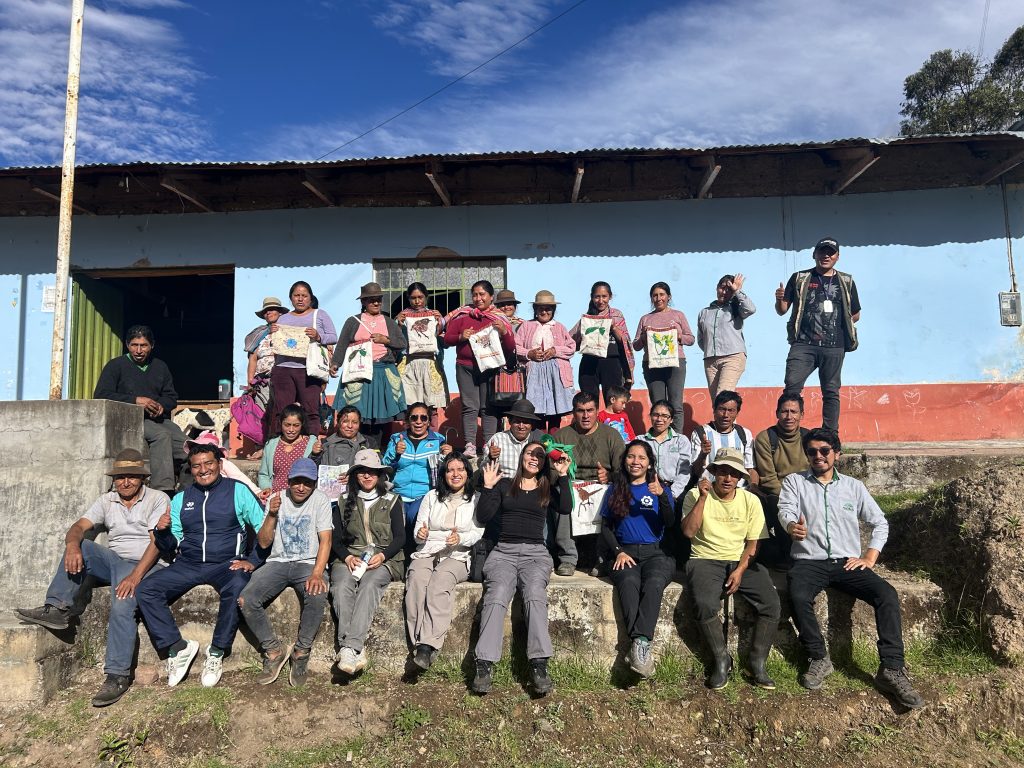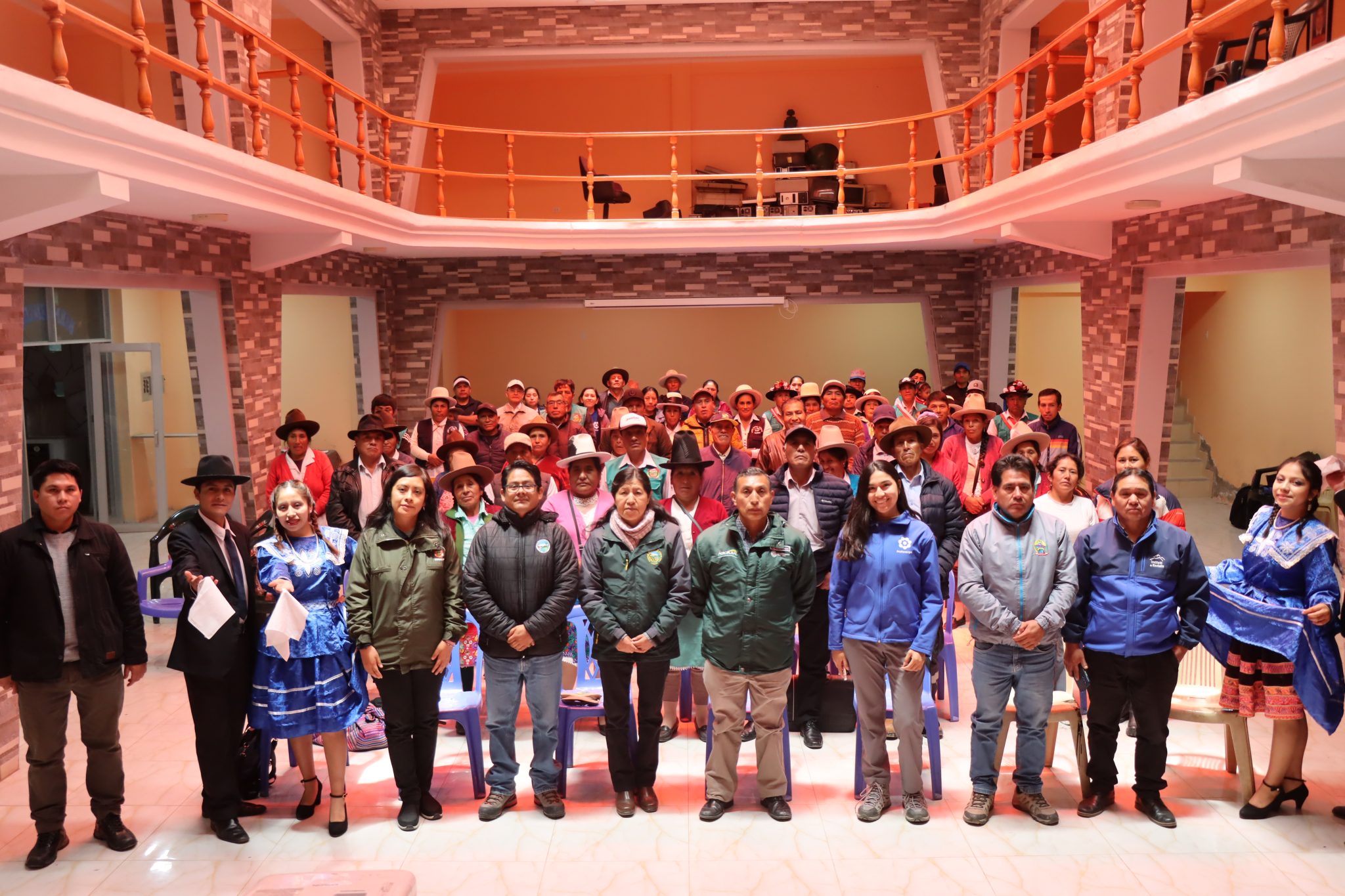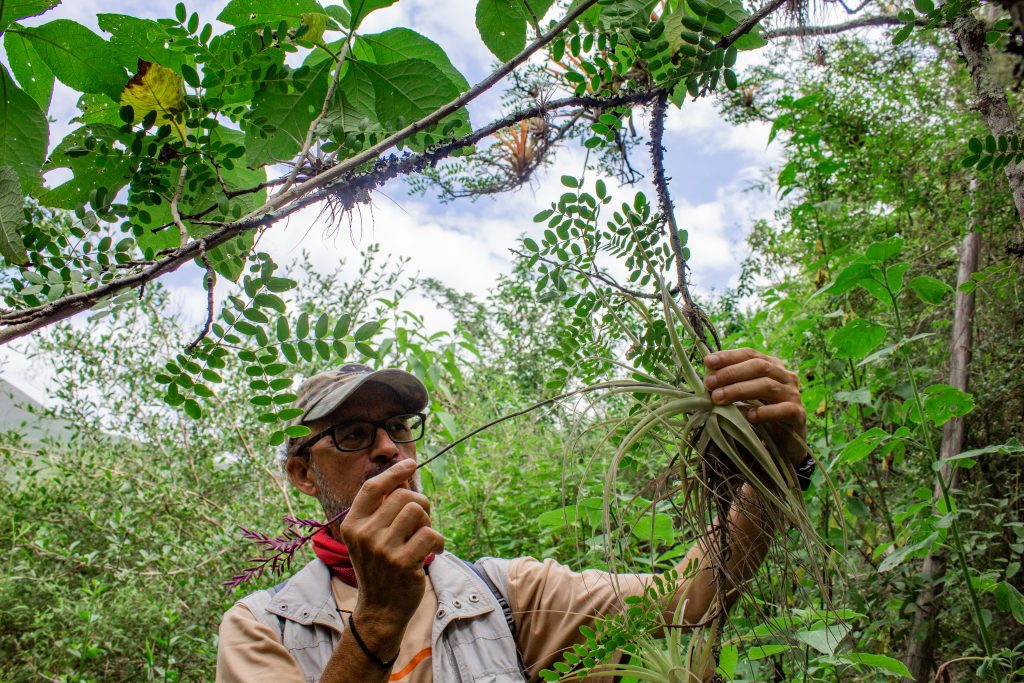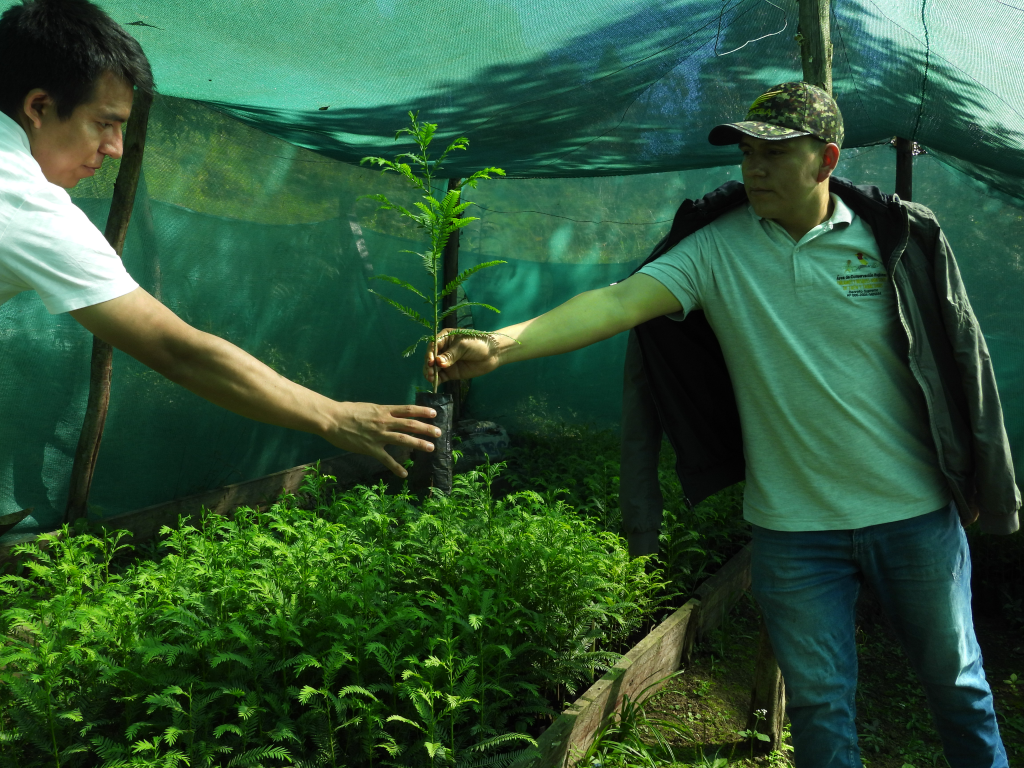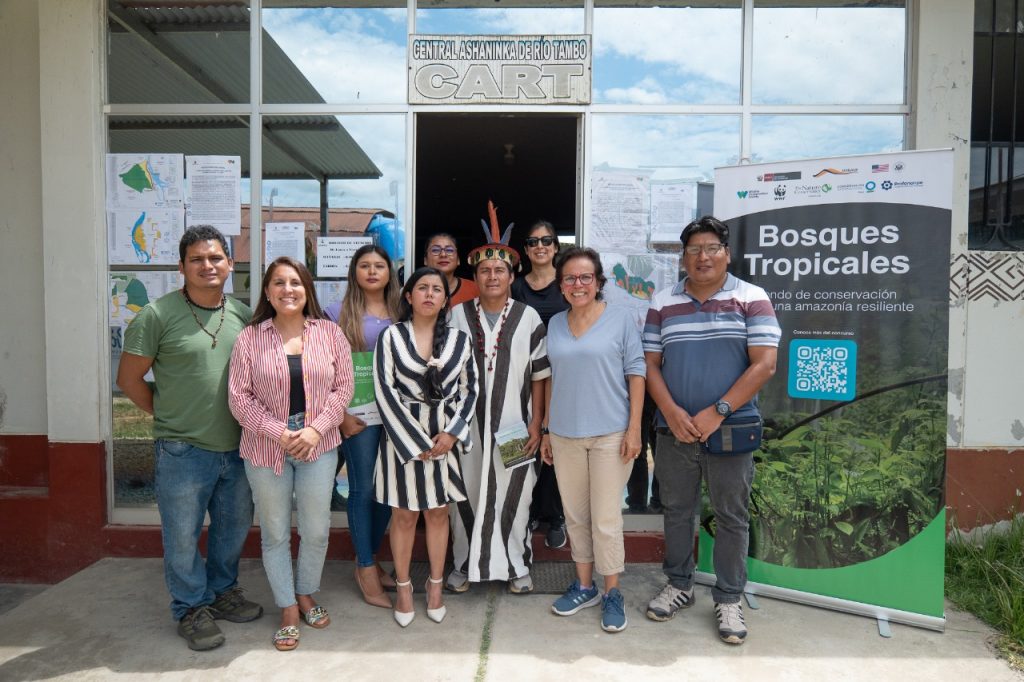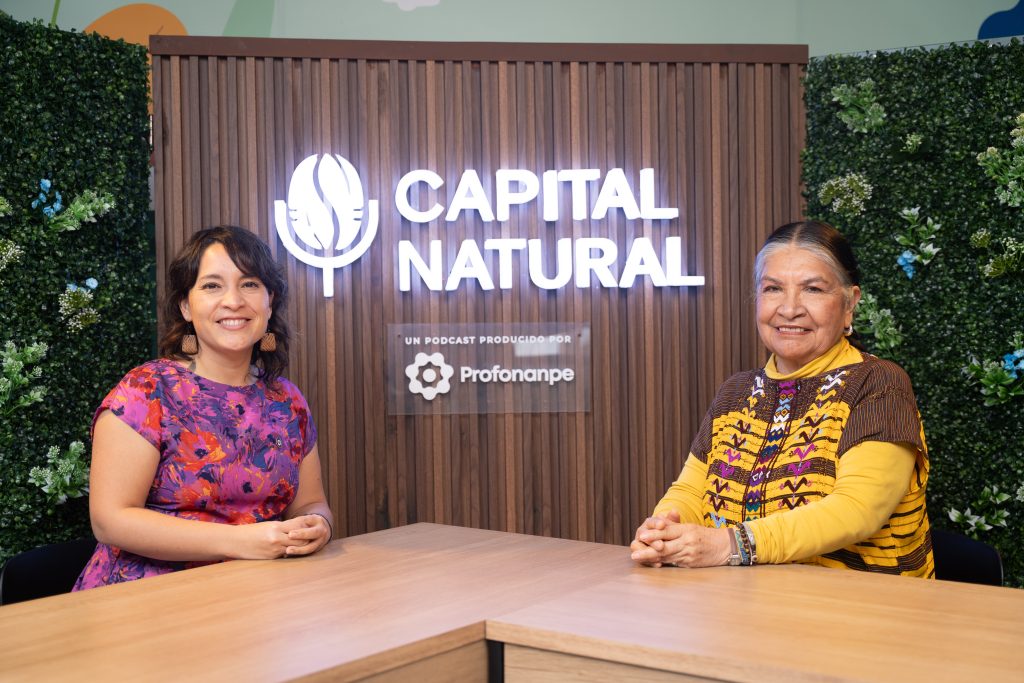Members of the Huata community together with the technical team of the Huata PCA project
Photo: Jonathan Chancasana
During the most recent monitoring visit to the Huata PCA project, led by the Andinus association and supported by the Conserva Aves Initiative, the sustained progress of this community, located in the Central Mountain Range of Peru, was verified. The integration of practices such as embroidery, environmental education, and the management of the communal nursery reinforces the local commitment and projects a vision of sustainable development in harmony with biodiversity.
Path Towards the Huata PCA
Currently, two biological monitoring efforts have been carried out, registering 109 bird species and five types of vegetation. One of the most significant findings has been the presence of the Black-spectacled Brushfinch (Atlapetes melanopsis), a bird endemic to the central Peruvian Andes, classified as «endangered» in the Peruvian Red Book.
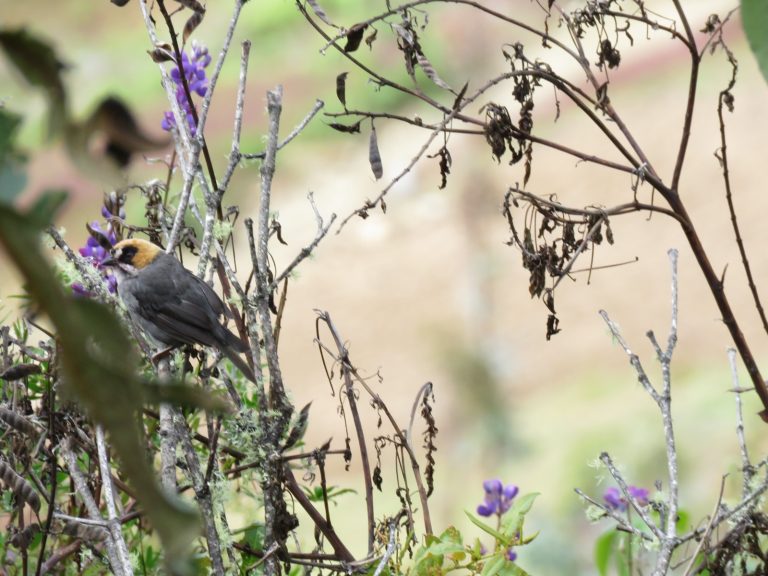
Black-spectacled Brushfinch (Atlapetes melanopsis)
Photo: Erick Barzola
In addition to the biological component, administrative advances have been achieved, such as the commitments from Huata families to participate in the project—a crucial step toward the formalization of the PCA. The coordinated work with local actors has helped strengthen communal governance and prepare the ground for the sustainability of the conserved area.
Strengthening Communal Commitment
Community integration and commitment are key points for the creation of the PCA and its long-term sustainability. Thanks to the implementation of productive and participatory activities such as embroidery workshops, environmental education, and the creation of a communal nursery, initial progress is being registered, with women taking a special leading role in every step of the process.
Through five sessions, the embroidery workshops have linked art, culture, and biodiversity. Women and girls from the community embroidered native species, such as endemic birds, fostering creativity and environmental awareness. This activity not only revives traditional techniques but also seeks to open new sustainable economic opportunities, strengthening female leadership and their role as guardians of the territory.
Environmental education has also been an area where women have taken a central role. With the support of early and primary education teachers, seven workshops were held in local educational institutions. Children participated in activities such as drawing ecosystems and recognizing local species, positioning themselves as the community’s new environmental promoters. The teachers, inspired by this experience, have committed to continuing to integrate conservation into their educational practices.
Similarly, the establishment of the communal and experimental nursery is a fundamental pillar for conservation and improving the quality of life in the communities. Through collective workdays and technical support, a nursery has been established in the Huata community and an experimental one in the city of Huancayo. These spaces enable the production and dissemination of forest resources for habitat restoration.
Local residents, both men and women, actively participate from seed collection to the planting and care of local flora. Thanks to this organized effort, as of April, 890 avocado seeds, 50 custard apples, and 50 black walnut seeds have been sown. Meanwhile, in the nursery in Huancayo city, the first sprouts of Andean elder (Sambucus peruviana), Chachacomo (Escallonia resinosa), and Mortiño (Gaultheria bracteata) were obtained—native Andean species that protect the soil, favor water infiltration, and offer food and shelter for birds, insects, and other pollinators.
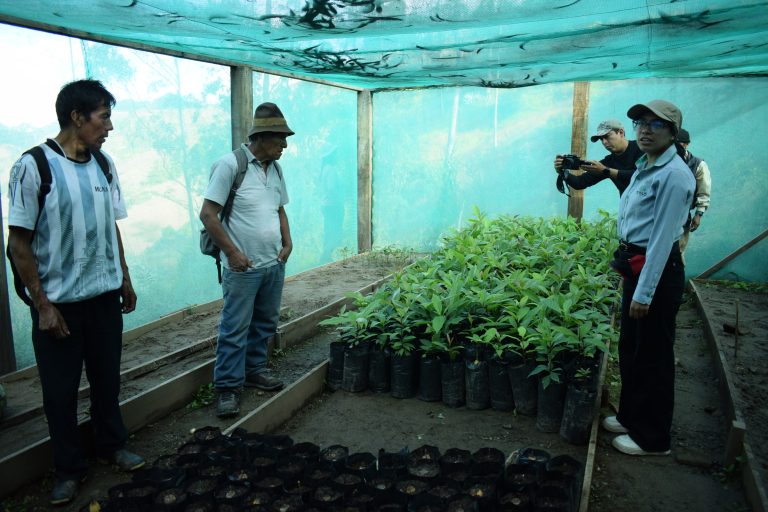
Huata communal nursery – July 2025
Photo: Rosa Gordillo Salazar
Vision Towards a Sustainable Future
These advances pave the way for new key stages in the process of creating the future Private Conservation Area (PCA) in Huata. Progress has been made in defining its location and delimiting its boundaries, a process carried out in a participatory manner with the community. Through the “talking map” methodology, community members identified land uses, which allows for the establishment of the conservation area’s zoning.
As part of this process, a communal assembly was held to grant approval for the designated conservation space, defining its location, area in hectares, and the term of the commitment. Furthermore, the community is awaiting additional documentation to formally continue with the legal recognition process of the area.
In parallel, biological and socioeconomic monitoring will continue, as will the implementation of participatory methodologies with adults, replicating the success of the educational activities carried out with children. Another goal is the design of a financial plan to guarantee the long-term sustainability of the area. Additionally, the plan includes the planting of more than 100 native plants and the strengthening of community ties.
The Huata experience demonstrates that conservation is more effective when it originates from the territory itself. The commitment of its residents, expressed in every activity and collective workday, reaffirms that protecting nature can also be a path toward well-being, local pride, and sustainable development.
Contact
Fressia Ames Martínez
President and Researcher at ANDINUS


